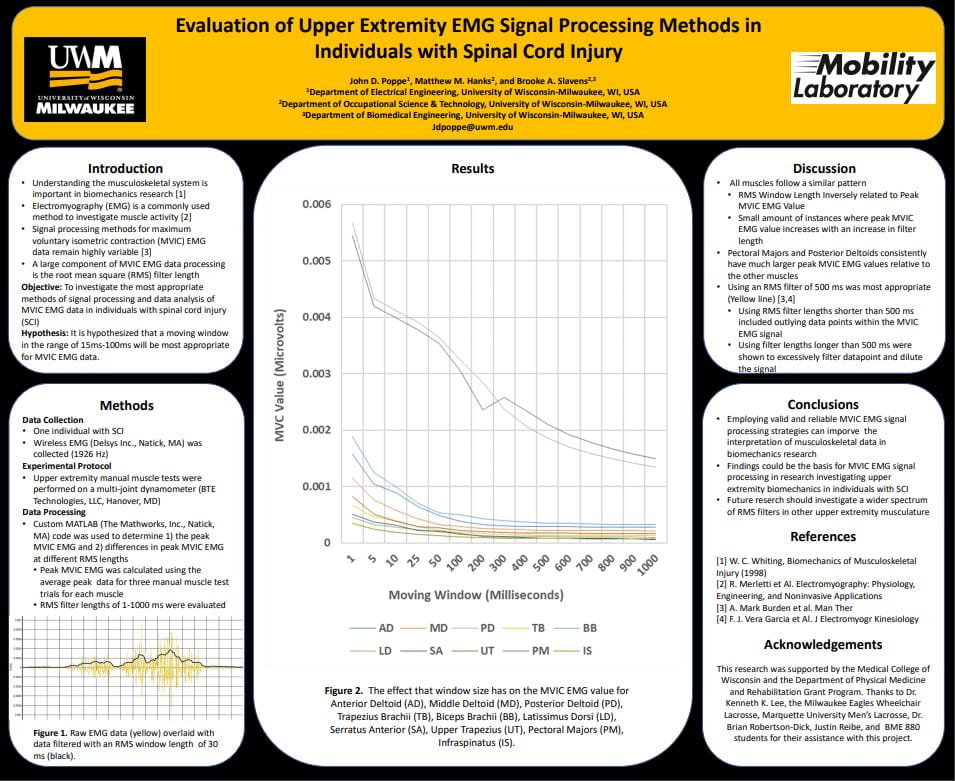John Poppe, “Evaluation of Upper Extremity EMG Signal Processing Methods in Individuals with Spinal Cord Injury”
Mentors: Brooke Slavens & Matthew Hanks, Occupational Science & Technology
Within biomechanics research, it is important to understand the musculoskeletal system in the context of human movement. One method that is commonly used in biomechanics research is surface electromyography (EMG); however, signal processing strategies for maximum voluntary isometric contraction (MVIC) EMG data remain highly variable. The aim of this study was to investigate the most appropriate methods for data analysis and signal processing of MVIC EMG data in individuals with spinal cord injury (SCI). Raw MVIC EMG data of the anterior deltoid, middle deltoid, posterior deltoid, biceps brachii, triceps brachii, pectoralis major, upper trapezius, infraspinatus, latissimus dorsi, and serratus anterior were collected using Delsys Trigno EMG sensors at a sampling rate of 1,926 Hz while an individual with SCI performed a series of isometric muscle contractions on a BTE multi-joint dynamometer. Custom MATLAB code was used to investigate differences in peak MVIC EMG using a spectrum of root mean square (RMS) filters. Peak MVIC EMG data were calculated using the mean maximum datapoint for three isometric muscle contraction trials for each muscle. This study found that using an RMS filter of 500 ms was most appropriate for processing raw MVIC EMG data in populations with SCI. RMS filter lengths shorter than 500 ms were shown to include outlying datapoints within the MVIC EMG signal, and longer RMS filter lengths were shown to excessively smooth the MVIC EMG signal. Employing valid and reliable MVIC EMG signal processing strategies can improve the quality of musculoskeletal data in biomechanics research. The methods from this study will be the basis for MVIC EMG signal processing in research investigating upper extremity biomechanics in individuals with SCI. Our future directions will include investigating RMS filters in additional upper extremity muscles during activities such as overhead throwing and wheelchair propulsion.
Click on the thumbnail below to open the full sized poster in a new tab.

Great work!
Thank you!